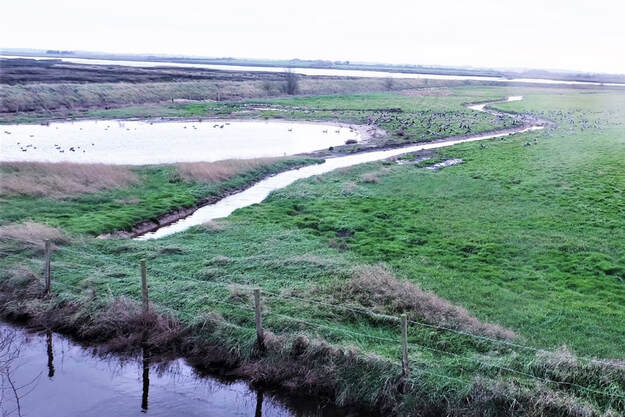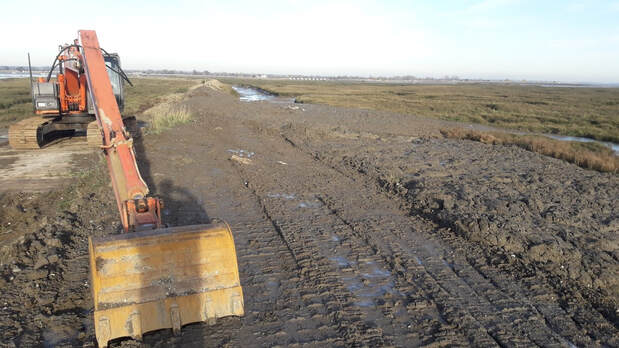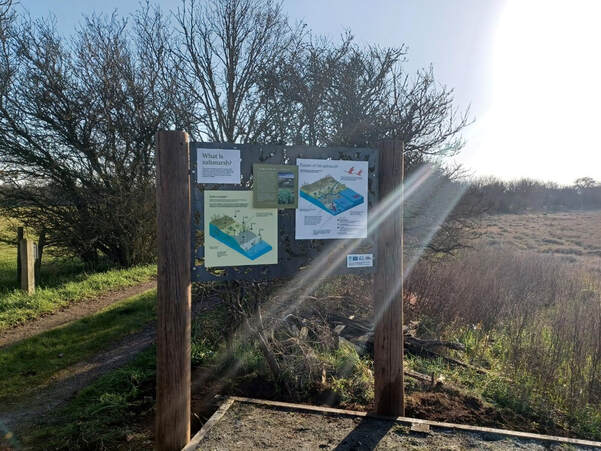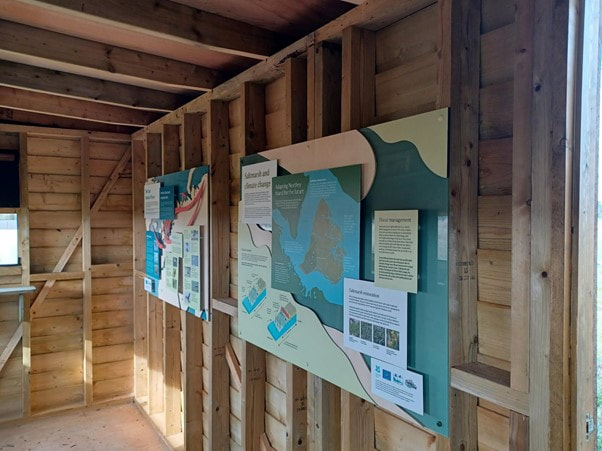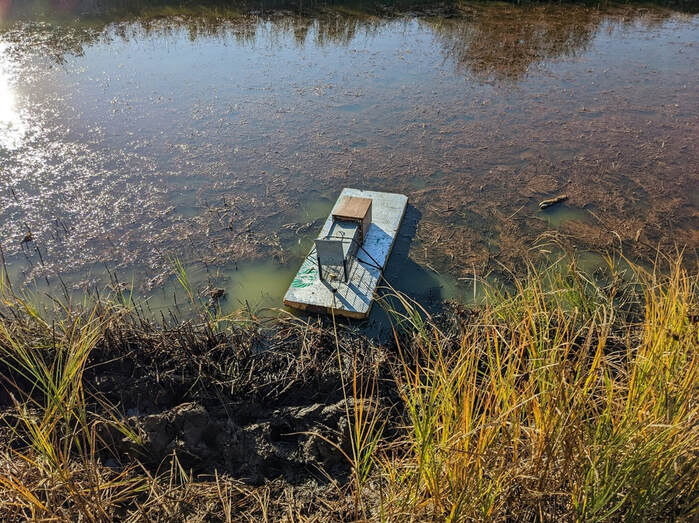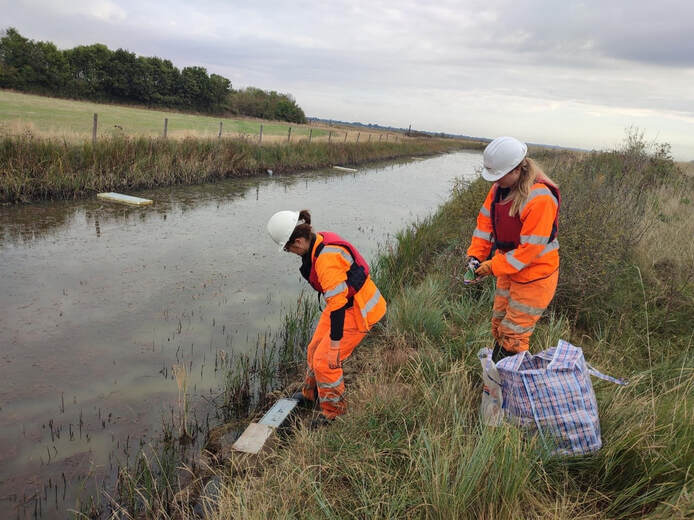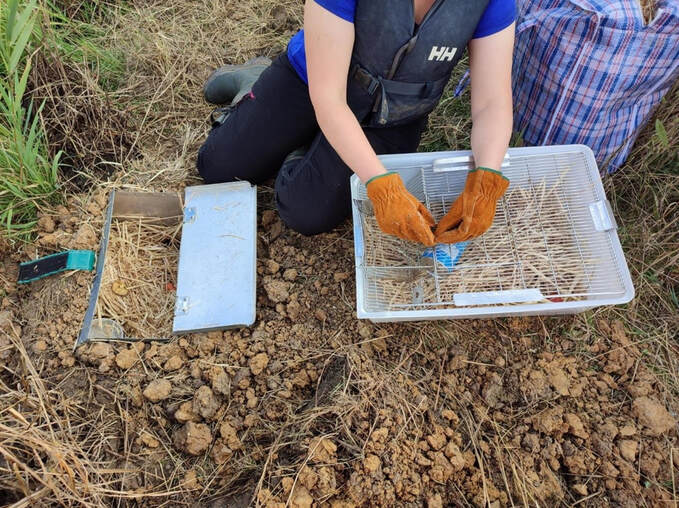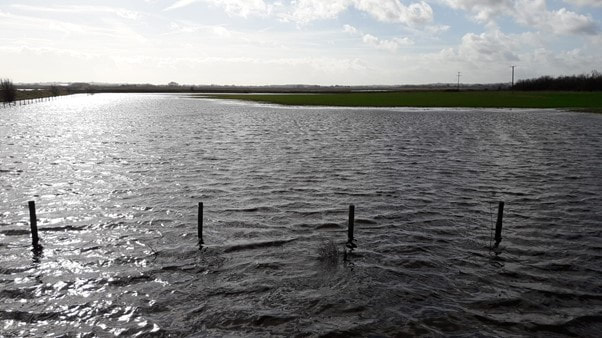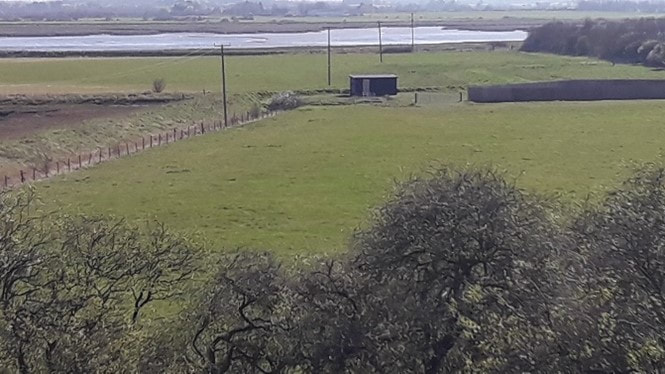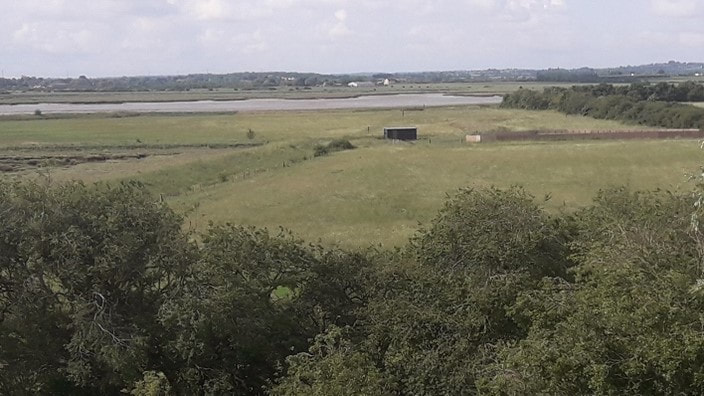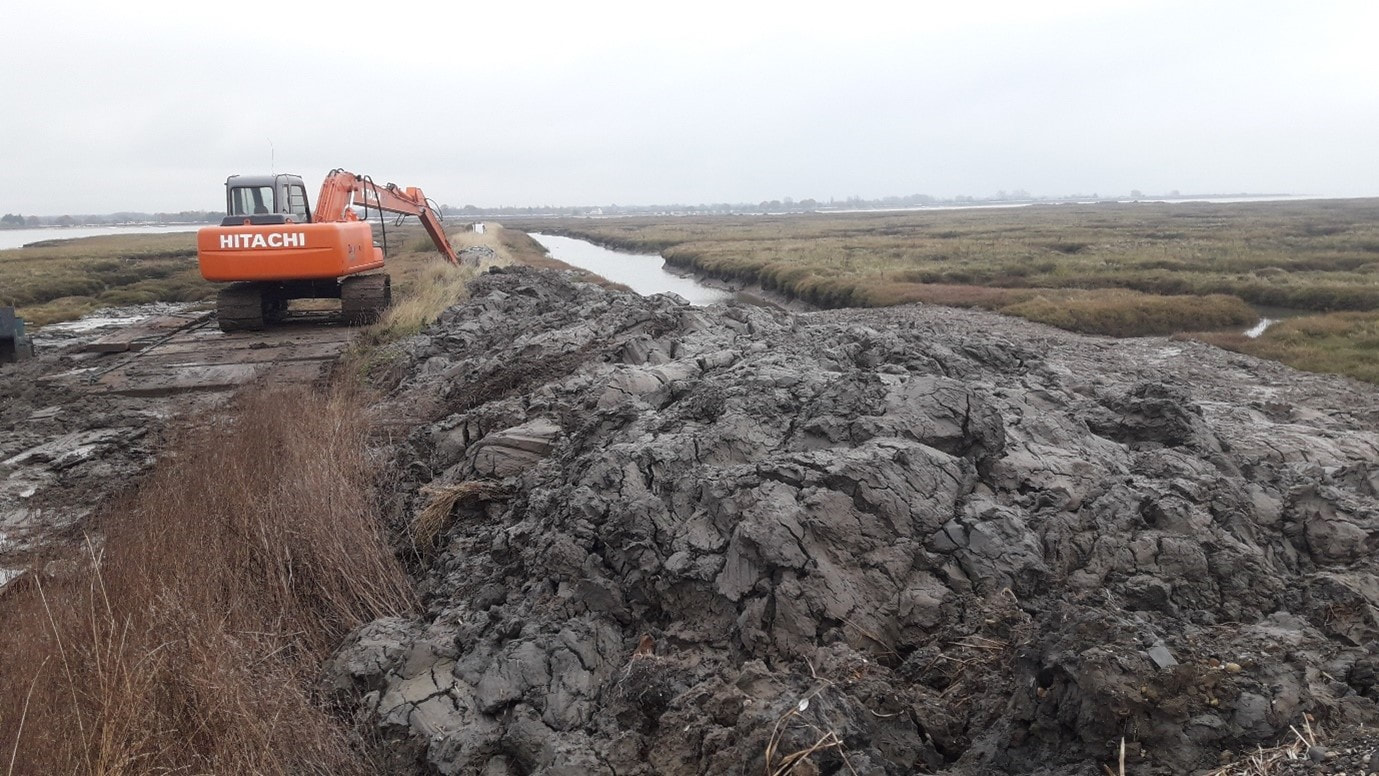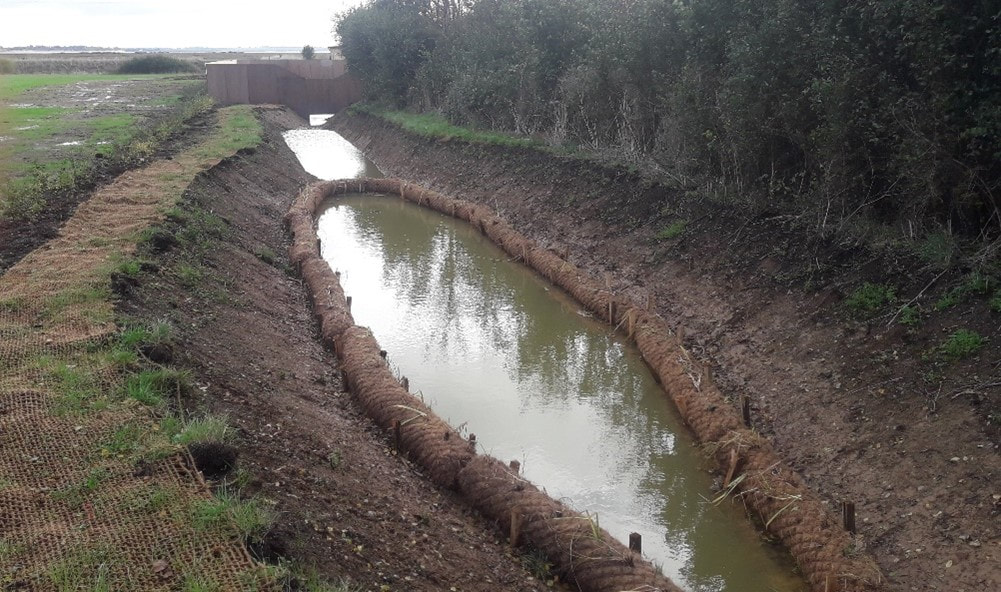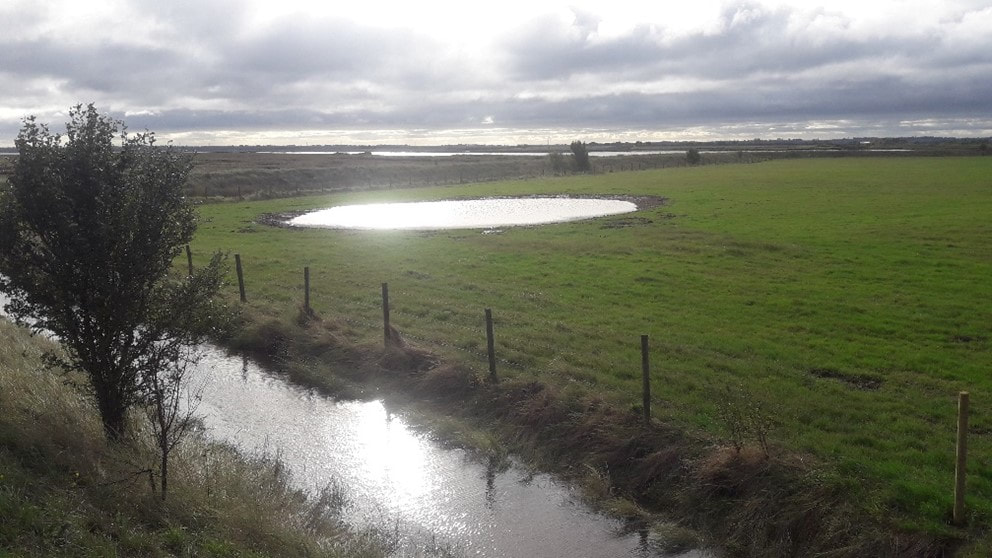|
Blog by David Mason, National Trust - Suffolk and Essex Coast Ranger ‘Working with the grain of nature yields the best chance of maintaining a healthy and beautiful coast for the future, a coast that is great for people and for wildlife.’ – Northey Island Coastal Adaptation Strategy Project Vision The UK government has recognised the importance of the East Atlantic Flyway, a migratory bird route over western parts of Europe including Yorkshire, Lincolnshire, Norfolk, Suffolk, Essex and Kent. In recognition of its vital importance to bird populations and wildlife it has joined the list of seven sites put forward to join the list of World Heritage sites. The area sees huge transient bird populations pass through every year as the seasons change, and the River Blackwater in Essex, including Northey Island, is one of its hotspots. More space created for birds. The overhead powerlines across the island were removed last year and replaced with underground cables. Once the flightline was clear the brent geese that winter here, along with lapwing, curlew and godwit, began using the eastern and southern field, areas of the Island they had previously avoided. The highest number of geese since 2015 (1710) was recorded on the WeBS count, along with the highest count ever of dunlin (3875) roosting at high tide. Following the managed realignment, this area in the eastern field is designed to be underwater at high tide. It will retain water when the tide goes out and will develop as a saline lagoon. The geese enjoyed the shelter of the sea wall over the winter and used all the grassland on the island. North West Wall beneficial use of dredged sediments (BUDS) Further sediment dredged from Maldon harbour has been placed to enhance the saltmarsh in this area as part of an ongoing project. Oystercatchers nested just beyond the placed mud on a patch of gravel. We are hoping other birds may use the new nest boxes placed on top of the cut down power poles left in the eastern field. Water vole update Pond marginal vegetation is well established in the main new pond and is providing food and shelter for the translocated voles. A pair of mallard also nested in the vole enclosure and hatched 10 ducklings. Signs of water voles burrowing in the pond banks and feeding have been found with the characteristic diagonal cut on the small piles of vegetation. Later in the year they will pull these into their burrows as a winter food source. A new extension fence has been installed along a connecting ditch to allow population expansion and accommodate any further voles found during the continuing works. The fencing installed to contain the voles will be removed when the works are finished, and they will have access to all the freshwater bodies on the island. Telling the story of Saltmarsh, Migration and Managed Realignment New interpretation boards have been installed in the hide and on a viewing platform, with a a new bench overlooking the River Blackwater towards Maldon and Heybridge. The three boards illustrate different aspects of the island’s environment. The first board explains the importance of saltmarsh for biodiversity, flood protection and carbon storage and the second highlights the East Atlantic Flyway used by migratory birds. The third board illustrates the work of the LOTE project to realign some of the sea walls to create 10 hectares of new saltmarsh and protect 50-60 hectares of saltmarsh for the next 100 years, predicted to have been lost to the effects of climate change without action. Another new hedge and pond created 276 hedge plants were planted in total and included hawthorn, hazel, wild honeysuckle, spindle, field maple, buckthorn, hornbeam, cherry plum and blackthorn. These species were selected to provide a good variety of fruit, blossom and year-round interest, so will hopefully increase the food sources available for birds and insects on the island. These have been weeded and mulched by the Essex and Suffolk Volunteer Group along with removing old barbed-wire and litter from the saltmarsh. Three new ponds have been created, linked by a connecting ditch, in the north east corner of the island. They have attracted yellow wagtail and mallard. Links to previous blogs about Northey Island
Part 1: www.projectlote.life/news/northey-island Part 2: www.projectlote.life/news/ntconservationadaption Part 3: https://www.projectlote.life/news/ntwatervoles
0 Comments
Blog by David Mason, National Trust Ranger After a busy summer and autumn, much of our coastal adaptation work on the island has paused for the winter and the site is closed to visitors. Brent geese and other waterfowl and waders now have the place largely to themselves. WeBS counts have recorded a wide range of birds on and around the island with avocet, curlew, golden and grey plover, redshank, dunlin, lapwing, black-tailed godwit, wigeon, teal and Brent geese being most numerous. Other species, mainly clustered around the new freshwater pond, have included yellow wagtail, linnet, whinchat and kingfisher. This has been a very useful source of freshwater for birds during the extended dry and hot weather this year, although levels dropped severely towards the end of the summer. This also led to new hedge plants suffering, which had to be watered several times to keep them alive. Blanket weed smothered newly planted marginal plants as the water levels dropped as well. Volunteers helped with the watering and clearing blanket weed. The abundant autumn rain has provided a welcome top up for the water features on site, however. Water vole translocation As I mentioned in my last blog the road to establishing new saltmarsh is a long and complicated one, and involves a number of stages and licenses which need to be complied with and completed before the next one can be implemented. One of these has now been completed. Following a successful process of habitat creation, trapping and translocation, 16 water voles have now been relocated to their new home out of the reach of the sea on Northey Island. As part of a Natural England licensed translocation of a protected species a new freshwater pond was created in 2021 and vegetation has since established to provide a new home for water voles (as well as being popular with local birds, as mentioned above). The vole’s less-than-optimal, existing habitat is threatened by inundation by the sea and is to be realigned as part of the LIFE saltmarsh creation project. The voles were trapped and translocated over several weeks by licensed professionals. The voles are carefully removed from the traps in cages, with tubes from a well known brand of crisp, their ideal hidey hole in transit. These are then used to place them into bottomless release boxes dug into the bank of the receptor pond. The voles can feed on provided carrots and apples and then burrow out when they are ready. The fence around the pond will keep them contained until they are fully established and the managed realignment works are completed. When removed, the voles will have access to a wider network of ponds and ditches around the island. Monitoring of the voles will continue to check on their progress over the coming years. The way is now clear to remove part of the embankment next year to allow the tide in and begin the next phase in process of establishing new saltmarsh. Visitor facilities A new path has been installed to the hide, which overlooks the new vole pond and what will be the new intertidal area following the embankment realignment. If they are lucky visitors may see a vole or hear a plop as they enter the water. Along the track we have also installed a viewing platform and bench overlooking the river and mudflats towards Maldon. I led a guided walk for visitors in September to talk about the threats to saltmarsh from climate change and sea level rise and the importance of the managed realignment and habitat creation project in contributing to saving this habitat. Attendees were able to use the new facilities for the first time. Remembering the history of Northey As well as providing important habitats for local wildlife, the island was also the site of Battle of Maldon between Anglo Saxon and Viking armies, which took place here in 991AD. This is commemorated in an epic Anglo Saxon poem and an exciting Lego renactment on YouTube. The latter captivated year 5 pupils at a local school to whom I recently gave a talk about the island as part of their studies of the Vikings. Nobel Peace Prize winner Sir Norman Angell also lived here in the 20th C. Links to previous blogs about Northey Island Part 1: www.projectlote.life/news/northey-island Part 2: www.projectlote.life/news/ntconservationadaption Blog by David Mason, National Trust Suffolk and Essex Coast Ranger for Northey Island Much of the saltmarsh at Northey Island is in poor health, eroding due to climate change and rising sea levels. Improving the condition of the saltmarsh will help to limit the impacts of climate change and make space for nature to thrive. Creating new saltmarsh The South East Embankment is in poor condition, regularly being overtopped by high tides. In the coming years we plan to create new saltmarsh by removing sections of this embankment, as we did at the south of the island in 2019, in a process called managed realignment. In preparation for this, in 2022 we are excavating new creeks in the East Field. This will help create healthy saltmarsh when we breach the embankment in the next few years by bringing silt and seed into the former field and allowing it to deposit and build up along the banks. On the face of it creating saltmarsh might appear simple. Remove the sea walls to let in the tide and allow the tide and natural processes to deposit silt and seeds to grow new habitat. This however is only the visible part of it. Species and habitat monitoring and satisfying the regulatory bodies; translocation of protected species and creation of compensatory habitat; gaining funding from internal and external national and international funding bodies and reporting to them; analysis of the expected natural processes, careful design of the new infrastructure and navigating the marine regulatory process; moving existing infrastructure; ongoing monitoring to measure the effects of the changes; managing contractors, staff and volunteers; and explaining it all to members of the public and colleagues: all these factors and more go into Saltmarsh protection and re-creation. This video gives an overview of the site and project aims. In February a surge tide came over the South East Embankment and flooded part of the island. This demonstrates why we need to consider how we manage Northey Island in the face of sea level rise and climate change. The overtopping of the embankments is not uncommon, happening at least annually and the frequency will increase into the future. The area of water gives a rough idea of where the tide will come to when the embankment is realigned. As sea levels rise further the new saltmarsh will progress even further onto the land. The water has now receded but is a reminder of why we continue to do our work at Northey Island. Removing overhead powerlines. Since the last blog there have been a few changes on site. Perhaps the biggest is the removal of the power lines that crossed the fields and the burying of new cables to the houses. Some of these power poles were in areas that will become saltmarsh. This has made a great difference to the landscape and will allow more safe access for birds flying into the fields, including the Brent Geese that come in during the winter to roost and feed. We have left some poles in place, cut down in height, and plan to install nesting boxes to the tops of the poles in the hope of enticing oystercatchers and other estuary birds to breed here. Volunteers As small cogs in that project machine at Northey Island, the volunteers and I have been supporting this work. The Essex and Suffolk National Trust Volunteers helped to paint the new hide which looks out over this area. They also weeded and mulched new hedging, watered new plants around the pond in the dry weather in early spring and cleared up a large amount of litter from the foreshore, including the flotsam and jetsam brought onto the island by the surge tide. They have also helped to prepare the ground for a new footpath through the fields to the hide. Wildlife Marsh harriers are regularly seen over the saltmarsh and a variety of birds have been using the area around the new scrape near the hide including yellow wagtail, shelduck, snipe, little egret, curlew, lapwing, teal, mallard, and shoveler. Cuckoos and whitethroat can be heard through the summer and Brent geese roost on the grass fields during the winter. Hopefully there will be plenty to see, looking over the developing saltmarsh, when the hide is open to the public. The hedges and grassland are alive with butterflies and walking along the access road in June and July surrounded by clouds of Meadow Browns feeding on the privet is mesmerising. A new freshwater pond has been created near the hide which will provide a more stable and favourable home for the water voles that currently reside in an unsustainable area. Once new pond side vegetation is fully established the plan is to translocate the voles to their new home. Diving beetles, water boatmen, pond skaters and dragonflies are already colonising these areas. Improved resilience to change Further locally dredged sediment has also been placed in the north-west of the island to raise up the saltmarsh. This will protect saltmarsh in this area, avoiding new channels being formed and reducing higher water flows over the saltmarsh which cause erosion and vegetation loss. This work has allowed further sediment to be deposited in the saltmarsh by the tides, building up the marsh and allowing saltmarsh plants to regenerate. This is improving diversity and creating rare upper saltmarsh where the marsh transitions into the terrestrial land. A section of bank has been reinstated at the north of the Island which has a shallower profile that will be better able to cope with overtopping by high tides, allowing water to run off without damaging the bank. This will help to protect the north of the island as sea levels rise. Topsoil will be spread to allow it to revegetate quickly. Public engagement. While patrolling the site and talking to visitors, answering email enquiries, and even commissioning the signs from the printer, explaining the aims and progress of the project to visitors and the local community is an important part of my role. The project featured in the National Trust member’s magazine reaching more than 5 million members. The Northey Island website has also been updated with project developments. https://www.nationaltrust.org.uk/northey-island Blog by David Mason, National Trust Ranger - Suffolk and Essex Coast ‘Increasing the extent and health of the saltmarsh area improves biodiversity and provides a range of other ‘ecosystem services’ (things that saltmarsh delivers for society) such as natural flood allevation, reductions in wave energy, spawning and nurseries for fish, providing food and shelter for birds, and locking up carbon dioxide to reduce the effects of climate change.’ I write this, the first Ranger’s blog from the Northey LOTE project, after visiting Northey Island on the Blackwater Estuary on the Essex coast. It was a bright November afternoon on a falling tide and as I approached the tidal causeway that links it to the mainland the last Lapwing and Dunlin were leaving the causeway to feed on the newly exposed mud. In the distance a flock of Golden Plover were glowing in the sunlight, reflected in the glistening mudflats. This is a spectacular place to see coastal birds when large flocks of waders and wildfowl gather on the estuary to feed and roost. Several years ago, I saw c.5000 Brent Geese land on a site on the Suffolk coast during an October storm as they came in to land for shelter, skein after skein, on their migration South. They left the next morning when the weather cleared and I wondered if I had dreamed it! I had heard that the Blackwater Estuary was a hotspot for them and have been delighted since starting work on the Essex coast last November to see where they were heading: Northey is a refuge for them in the winter where they roost and graze on the grass fields and on the saltmarsh as the tide comes up. In February I spent a happy morning clearing a footpath for the new circular visitor route we put in place this year, working with hand tools to minimise disturbance, while the geese chattered quietly in the field nearby. I first visited the site in 2019 as the work to realign the South Embankment was being undertaken. This work was finally completed this year after delay in 2020. The mud from the embankment was placed in the ditch behind it (from where it had originally been dug in the mid-1800’s) to reform the natural landscape; the realigned area has now been naturally colonised by a wide range of saltmarsh species such as sea purslane, samphire, sea aster and sea beet as the tide has flooded the area, bringing in seed from the surrounding area. This area grades into a rising grassland bank which as sea levels rise will become new saltmarsh but now provides a rare transitional area between the saltmarsh and terrestrial grassland. Now the pressure of coastal squeeze has been reduced, it is also notable that the saltmarsh in front of where the embankment was (which was heavily eroded) is also showing some signs of recovery with sediment depositing and new saltmarsh vegetation growing. I am impressed at how quickly this has established from bare mud. Allowing the coastal processes to function naturally without the constraints of man-made structures seems to be key. There is an increasing urgency to carry out more of this work for nature conservation as existing saltmarsh is rapidly eroding due to sea level rise and coastal squeeze on saltmarsh between the tide and coastal defences. The island has been busy with contractors this year and new habitat and visitor facilities have been created and installed in preparation for future realignment of other embankments. Volunteers from the Essex and Suffolk National Trust group helped in maintaining the visitor route and picked up eight bags of litter from the foreshore. There are a small number of water voles that live a marginal existence on Northey Island. The water voles’ homes and their numbers here have recently suffered from flooding from the sea (such as in 2013 and 2017/18) and hot dry summers. Part of our work in adapting to climate change and sea level rise is to create a new watery habitat for them. A new pond and ditch system has been created on higher ground which will provide a safer, more sustainable future home for Water Vole. Coir rolls with pond plants embedded have been placed which it is hoped will provide food and shelter for the voles and other wildlife when they become established. This is overlooked by a new hide where visitors will be able to look over the pond, a new scrape and establishing saltmarsh. A new scrape created this summer has filled with water and is already attracting Lapwing, Teal and Curlew amongst others. In some areas dredged sediment from elsewhere in the estuary is being used to increase the resilience of the marsh. The adaptation of the coastal processes this achieves will prevent further erosion of saltmarsh in these areas. Eroded creeks that were bare mud a few years ago are already building up with natural silt deposited by the tide and recolonising with saltmarsh plants. The estuary side of the bank in this area includes some areas of shingle which provide another niche habitat and attracted 49 Ringed Plover in August, as noted on the regular bird (WeBS) count.
All in all it has been a fascinating year seeing the work progress and habitats develop and sharing it with visitors and volunteers and now you. |
Archives
April 2024
Categories
All
Photo credits: Oystercatcher by Katie Nethercoat (rspb-images.com)
LOTE Logo credits: Saskia Wischnewski |



